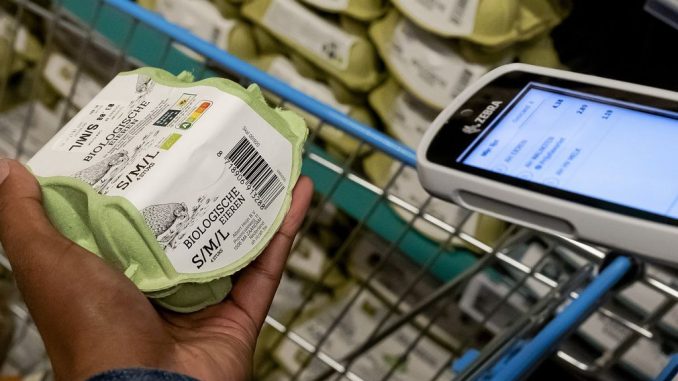
The barcode has existed for 50 years, but the end is approaching
A cheerful beep at the checkout: a sound that has become an indispensable part of the supermarket. Today marks 50 years since the barcode came into use. But soon it will end. From 2027, the barcodes will be replaced by QR codes.
Mirjam Karmiggelt is director at GS1, the company that manages barcodes of products: from peanut butter jars to garments. She explains that a barcode consists of bars that in turn represent a unique series of numbers. Typically, that string has thirteen digits, the first three of which represent a country code. The other figures refer to the company and the article, among other things.
By scanning the barcode, the physical product is linked to a digital system. “That helps with looking up, sharing and ordering product information,” says Karmiggelt. “A barcode represents hundreds of data, such as the size and ingredients of a product, as well as photos.”
Barcode has been around for 50 years: This is what the first beeps looked like
The barcode was invented in 1949 by the Americans Joe Woodland and Bernard Silver. Inspired by the concept of Morse code, Woodland drew his idea with a finger in the sand on Miami Beach. But it would be many years before the invention came into use. A computer and a scanner that could read the barcode did not yet exist.
It was not until 1974, on June 26, that the first product in an American supermarket received a barcode. About two years later, the code also made its debut in the Netherlands. The first product to be scanned was a pack of Douwe Egberts coffee in an Albert Heijn branch in Heemskerk.
An electronic eye
In January 1977, De Telegraaf described the supermarket’s switch to the computer, a “piece of technical ingenuity” that “keeps track of the entire ins and outs of this branch”. Thanks to the “stickers with a number of lines”, the cashier no longer had to enter the prices by hand. Because the lines are read “via an electronic eye by the computer”, many errors would be prevented, the newspaper wrote. In addition, long waiting times at the checkout would now be a thing of the past.
Noortje van Genugten of Albert Heijn knows that the barcode caused a lot of change at the time: “No one was used to having to bleep something. In fact, it was such a revolution that a number of suppliers found it exciting and that is why we only introduced barcodes in the store.” our products stuck.”
Infinite information
After more than fifty years, the familiar barcode will disappear from packaging. In 2027, this will make way for the checkered QR code. The main reason is that the new code can contain much more information in addition to an identification code. And the code can be linked to all kinds of information sources. In addition, consumers can scan QR codes themselves with their smartphones.
“This allows you to share an infinite amount of information,” says Karmiggelt. For example, about the sustainability aspects of products. “Think of certificates, origin or recycling information.”
In any case, Albert Heijn’s Van Genugten is enthusiastic about the upcoming change. For example, she wants to put recipe tips and allergy information in the QR codes. “The most frequently asked question from Dutch people is still: what are we having for dinner tonight?”
It will be quite a job to replace all barcodes on packaging with a QR code. A supermarket contains an average of 17,000 items, says Van Genugten. By the end of 2027, Karmiggelt and Van Genugten expect that all cash registers will be ready to scan QR codes.

Be the first to comment